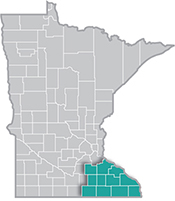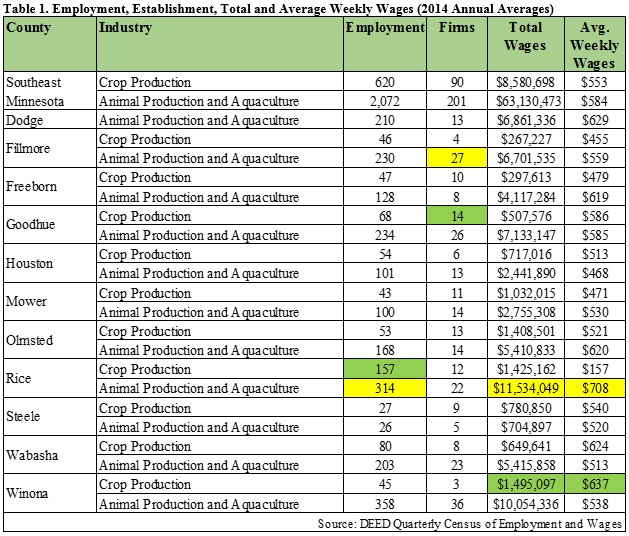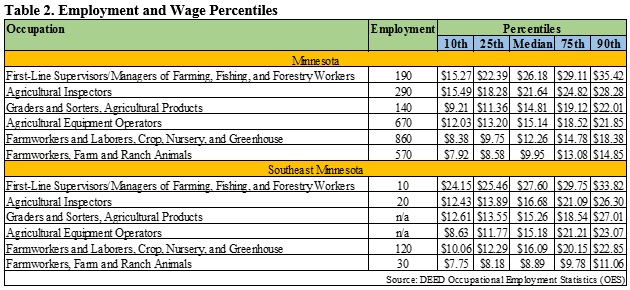 Southeast Minnesota is a health care and agricultural powerhouse. The region is home to the renowned Mayo Clinic and some of the world's most recognized food companies and brands.
Southeast Minnesota is a health care and agricultural powerhouse. The region is home to the renowned Mayo Clinic and some of the world's most recognized food companies and brands.
Advanced manufacturing is especially strong here, with machinery, chemicals, and electronics among the top products.
Want the freshest data delivered by email? Subscribe to our regional newsletters.
2/17/2016 2:23:55 PM
Agriculture, specifically animal production and crop production, is a staple industry in Southeast Minnesota. Combined, the region has 2,692 jobs at 291 establishments in these two industry sub-sectors, making up 90 percent of all the jobs in the agriculture, forestry, fishing, and hunting sector. Animal production is the larger subsector, with 2,072 jobs at 201 firms, followed by crop production, with 620 jobs at 90 firms.
As shown in the county-level breakdown in Table 1, Rice County is home to the most jobs in crop production with 157 jobs, nearly twice as many as in Wabasha County, which had 80 jobs in crop production. Winona County was the top dog in animal production with 358 jobs, followed closely by Rice County with 314 jobs, then Goodhue, Fillmore, Dodge, and Wabasha counties all having over 200 jobs. Interestingly, Steele County had the smallest number of both crop production and animal production jobs in the region.

Other than a sharp increase in Rice County from 2012 to 2013, the number of jobs in animal production and aquaculture have been relatively stable since the recession. Three of the 11 counties saw very small job declines from 2009 to 2014, but the rest of the counties held steady or saw small increases (Figure 1). Although we have data for 2014, there was too much missing data to look at long-term job trends in crop production.

In Southeast Minnesota, as in the state as a whole, the largest occupation in agriculture are farmworkers and laborers (crop, nursery and greenhouse). Because of the region’s strong number of jobs within this occupation, wages are higher in Southeast Minnesota than across the state. Wage percentiles are also higher in the Southeast region for first-line supervisors/managers of farming, fishing and forestry workers (except the 90th percentile), graders and sorters of agricultural products (except for the 75th percentile wages), and agricultural equipment operators (except the 10th and 25th percentiles).
The hourly wage needed to meet the basic needs cost of living for a two-parent family with one child – the average family size in Minnesota – is $13.30 per hour in Southeast Minnesota, according to DEED’s Cost of Living tool. As shown in Table 2, the median hourly wages for all but one agriculture-related occupation (farmworkers, farm and ranch animals) are above this threshold. So if working outdoors, interacting with animals, and driving and maintaining equipment (to name a few job tasks) sound like fun, then a career in agriculture may be right for you.

Contact Mark Schultz.